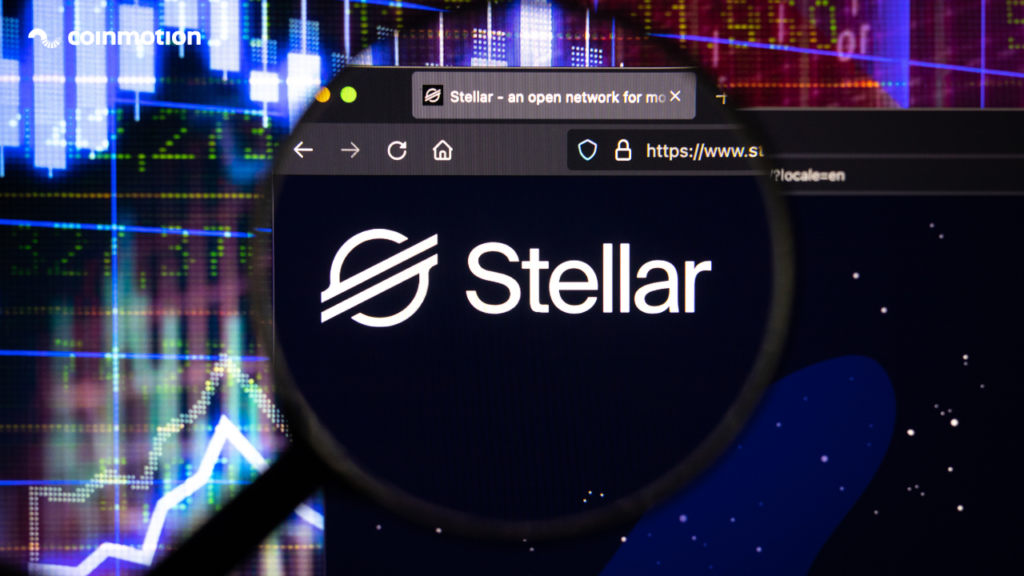Stellar Lumens is one of the largest blockchain projects in the world. It has established itself among the top 50 cryptocurrencies in the world.
“Stellar” represents the network, while “Lumens” (XLM) describes the digital currency of the system.
Throughout its timeline, the Stellar network has managed billions of transactions, forged collaborations with significant enterprises, and emerged as a sought-after investment avenue.
This guide will elaborate on Stellar Lumens, its operational principles, and the distinguishing factors that set it apart.
Stellar Lumens, established in 2014 by Jed McCaleb, who is also recognized as the founder of Mt. Gox and Ripple, has the following characteristics:
- Facilitates digital currency transfers
- Utilizes XLM as its native token
- Primary competition lies with Ripple
- Employs a swift, cost-effective, and eco-friendly consensus mechanism
What is Stellar Lumens?
Stellar Lumens is a blockchain that aims to connect people and financial institutions around the world. Stellar’s goal is to make the economy more inclusive by creating accessible, cheap, and easy-to-use global payment systems.
Founded in 2014, Stellar Lumens is similar to many other blockchain projects: it allows you to transfer wealth around the world quickly and cheaply. Transfers are verified on the blockchain, which makes them safe and almost free.
However, Stellar differs significantly from Bitcoin. While Bitcoin functions as a decentralized cryptocurrency, Stellar Lumens adopts a centralized approach, bearing resemblance to Ripple rather than conventional cryptocurrencies.
Stellar’s network is maintained by the Stellar Development Foundation. The network has its own cryptocurrency, Stellar Lumens, or XLM.
History of Stellar Lumens
Stellar Lumens debuted in 2014, established by American programmer Jed McCaleb, recognized as Mt. Gox’s former founder, the world’s leading crypto exchange at one point. McCaleb is also a co-founder of the tech firm Ripple.
Following disagreements, he departed Ripple alongside partner Joyce Kim, embarking on the creation of the Stellar protocol, built upon Ripple’s technology.
Together, they initiated the non-profit Stellar Development Foundation (SDF), aiming to advance worldwide financial access, comprehension, and engagement. Their objective was to forge an inclusive economic system accessible to individuals across various income brackets.
Stellar Lumens received $3 million in seed funding from payment company Stripe. Stripe received 2 billion XLM tokens in return.
In 2016, renowned tech consultancy Deloitte revealed a joint effort with Stellar to craft a payment app.
Stellar gained prominence in October 2017 by unveiling a collaboration with IBM, aiming to set up multiple currency routes connecting South Pacific nations.
The partnership aimed to handle over 50% of cross-border transactions, facilitating quicker dealings for small enterprises, nonprofits, and community banks—examples being Australia, Fiji, and Tonga.
How does Stellar Lumens work?
Stellar has a blockchain that allows it to track the ownership of all accounts and cryptocurrencies online. It maintains the blockchain and processes transactions with the unique Stella Consensus protocol.
Stellar is not as decentralized as, for example, Bitcoin. It enables faster and more efficient transactions by compromising on decentralization.
All balances and transactions are broadcast to the entire network every five seconds. Transactions are verified by computers running the Stellar Core software, called nodes.
There are nodes all over the world, and anyone can turn their computer into a node by installing the Stellar software. Then their computer becomes part of the consensus process.
This system enables Stellar to swiftly process transactions within five seconds, with costs amounting to fractions of a cent. While fees might rise with heightened online activity, they remain exceptionally cost-effective.
The most visible difference between Stellar and Bitcoin is its consensus protocol. Stellar’s consensus protocol does not rely on the entire mining network to accept transactions. Instead, it uses an algorithm that enables faster transaction processing.
Each node in the Stellar network selects another set of trusted nodes. When all nodes in this set have accepted a transaction, it is considered accepted. The shortened process has made Stellar’s network extremely fast, reportedly handling up to 1000 transactions per second.
While Stellar can theoretically transfer any commodity that can be formatted as a blockchain token, this still requires additional actors, i.e., companies, institutions, and similar entities, willing to convert online transfers into desired commodities.
For example, if person X transfers 10 euros from Finland to Sweden, there must first be an entity in Finland that exchanges the euros for XLM tokens, after which the XLM tokens are sent to Sweden via an entity that, in turn, can convert them back to euros.
Stellar Lumens vs. Ripple
Stellar shares many similarities with Ripple. It facilitates the transfer of various currencies and tokenizable commodities. Similar to Ripple, Stellar relies on centralized entities that accept and facilitate conversions of blockchain tokens to fiat currency.
A centralized entity, Stellar.org, maintains Stellar. Its responsibilities encompass platform-to-platform transfers and collaborative agreements with other institutions. Operating akin to a corporate entity, Stellar boasts notable partners, including IBM.
Beginning in 2014, Stellar’s origins trace back to Jed McCaleb’s departure from Ripple amid disputes, leading him to develop his own cryptocurrency. Initially, Stellar was directly built upon Ripple’s foundational code.
Stellar Lumens isn’t mined; the complete supply of 100 billion tokens was released during network inception. Additionally, Stellar features a 1% yearly inflation, leading to gradual token growth.
How does Stellar Lumens differ from Ripple?
- Stellar.org operates as a non-profit entity, while Ripple functions for profit
- Stellar boasts slightly more decentralization compared to Ripple
- Stellar employs a distinct consensus mechanism in contrast to Ripple. Stellar’s objective involved dispensing 100 billion XLM tokens across a decade, whereas Ripple allocated 45 billion XRP to users, retaining the remainder
- XLM tokens experience 1% annual inflation, whereas XRP tokens have limited issuance
Get to know Ripple (XRP):
What makes Stellar Lumens unique?
Numerous digital currencies present cost-effective, swift transactions. Stellar’s unique advantage lies in its compatibility with all currencies. It enables the transfer of digital representations of US Dollars, Euros, Bitcoins, or any global currency.
Stellar’s purpose isn’t to supplant existing financial systems but to elevate them by establishing a collaborative network for all financial institutions.
For individuals, Stellar provides a seamless means to transfer funds across borders. It also facilitates the acquisition of digital equivalents of diverse currencies – a valuable choice for individuals in nations lacking a robust national currency seeking an alternative for savings.
As an open-source network, the Stellar infrastructure is open to everyone to use and develop. Companies can use it to develop their own blockchain application or crypto token. The Stellar network can also be used to make payments and convert digital currencies to cash and vice versa.
XLM-token
The Stellar network’s own cryptocurrency is Lumens, i.e., the XLM token.
Lumens are tokens built into Stellar specifically designed to create friction in the system. Since Stellar is an open-source network, the founders were afraid that it would be too easy for malicious actors to slow down the system.
To use the Stellar network, users are required to have a minimum balance – currently one XLM token. XLM tokens are also used for transaction fees – the minimum fee is 0.00001 Lumens. These requirements are high enough to keep malicious actors out but low enough that anyone can use Stellar.
XLM tokens are not subject to mining; during the system’s inception, 100 billion Lumens were generated. Furthermore, XLM tokens incorporate a built-in 1% annual inflation.
Buy Stellar Lumens (XLM) securely on Coinmotion
Investing in Stellar Lumens is possible via Coinmotion. Our altcoin selection for customers is highly discerning, featuring exclusively reputable and consistently evolving cryptocurrencies.
Established in 2014, Stellar Lumens is embraced by various international financial entities.
With our service, investing in Stellar Lumens is secure. Customer funds find protection in multisig cold wallets situated beyond hackers’ grasp. We meticulously segregate customers’ funds from the company’s assets.
Buy Stellar Lumens on Coinmotion
The future of Stellar Lumens
Stellar capitalizes on the network effect, with its future potential hinging on forthcoming institutional participation. Already aligned with robust allies like IBM, Stellar’s prospects could shine brighter if collaborations yield fruit and widespread bank adoption transpires.
Yet, simultaneously, Stellar faces formidable contenders like Ripple and even Ethereum. Ripple parallels Stellar’s fundamental functionality, albeit currently boasting a stronger market foothold. Conversely, Ethereum dominates token usage in arenas like ICO investments. If Stellar aims to surpass these giants, it has a substantial journey ahead.
Stellar’s distinction lies in its alignment with Bitcoin rather than rivalry, promoting global Bitcoin adoption while facilitating Bitcoin transfers. The likes of Stellar and Ripple spotlight the substantial potential blockchain holds for traditional finance.
Stellar’s official site cites rapid 2-5 second online transfers and guides programmers toward platform-service development.
Stellar Lumens (XLM) — FAQ
What is Stellar Lumens?
Stellar Lumens stands as an open-source, decentralized network that facilitates rapid and cost-effective cross-border digital money transfers across various currency pairs. Its native cryptocurrency is the XLM token.
What is Stellar Lumens used for?
Stellar Lumens is crafted to link individuals and global financial entities. Its objective is to facilitate swift and economical currency transfers for individuals, small enterprises, and financial institutions.
Is it worth investing in Stellar Lumens?
Stellar’s rapid and efficient technology positions it as a feasible solution for managing money transfers. Ripple stands as its primary rival. Stellar’s potential growth hinges on the institutions that align with it down the line.
Create an account:
Get started with Bitcoin Litecoin Ethereum AAVE USDC Stellar Ripple
Join Coinmotion and buy your first cryptocurrencies within minutes!
The views, thoughts, and opinions expressed in the text belong to the author and not necessarily to the author’s employer, organization, committee, or other group or individual.


